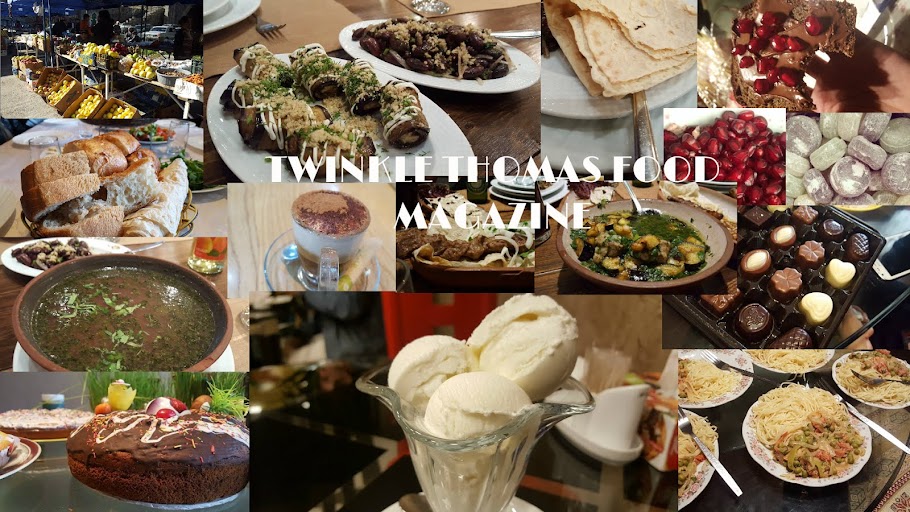 |
| (C). CAN STOCK PHOTO |
As a foodie I have often travelled sniffing for that yum
delicacy. Celebration and auspicious occasions tend to be marked by good food.
A payasam or a biriyani or cakes for Christmas are typical examples of
traditional food cooked and enjoyed during festivals. Even weddings, births and
such auspicious occasions are celebrated with good food. But amidst the parsi
community you come across a very traditional food that is prepared during the
period of mourning, in fact to break the abstinence during mourning. In fact
dhansak, which may be cooked as a normal dish in a parsi family is never ever
prepared for any auspicious occasion in a parsi family. In fact dhansak is such
a heavy dish that it was traditionally cooked only on Sundays so that a person
could enjoy a siesta after such a filling meal.
A fusion of traditional Zoroastrian cuisine influenced by
gujarati elements, dhansak is essentially a mutton dish cooked with lentils and
vegetables. It is traditionally had as a side dish with caramelized brown rice.
It has a long preparation time and is absolutely unique in taste just like the
community that prepares this dish.
Zoroastrians traditionally believe that fire and earth are
the two most pure elements. Death and the subsequent contamination of the dead
body by the corpse demon daeva, renders the dead body unsuitable to exposure to
fire and earth. The body is thus presented to scavengers who feast of the body
and then the bones are left to be bleached in the sun. Funeral procession to
the tower where the body is left for scavengers is always accompanied by a dog,
and this signifies a final act of charity by the dying whereby he offers his
body as food to scavengers. There is a prescribed mourning of 4 days after
this, where abstinence is prescribed. On the fourth day after a ritual bath and
prayers and cleansing in the presence of the holy fire, the abstinence is
broken. Dhansak is a food that is traditionally consumed to break this
abstinence. Though vegetarian varieties are available today Dhansak is
traditionally made with goat meat, and no other meat.
As a dish dhansak is made as mix of lentils, vegetables and
mutton. Consequently it’s a very heavy dish that is high on nutrients. It is
very high on proteins owing to the pulses and the mutton in it. It also has
high dietary fibers. Thus it is a dish that is easily digestible very high on
nutrients and absolutely yummy to taste.
One of the key features of cooking dhansak is the slow
preparation of the ingredients to make it and dhansak masala which has up to 15
different spices imbibed in it.. While cooking today we will use a few cheat
codes so to speak to adjust it to be accessible and cook able by a greater
mass. As always the cooking starts with collecting of ingredients and to cook a
portion catering to about 6 people and a bit we need the following :
- Toor dal (yellow pigeon pea) 2 cups
- Moong dal (split mung beans) 1 cup
- Masoor dal (split red lentils) 1 cup
- Onions 2 small
- Ginger-garlic paste 2 table spoon
- Turmeric powder 2 tea spoons
- Red chilli powder 2 tea spoons
- Garam masala 2 tea spoons
- Dry dhansak masala powders 2 tea spoons
- Methi (Fenugreek ) seeds 2 tea spoons
- Pumpkin 1 small slice
- Capsicum 1 medium
- Brinjal 2 small
- Mutton 1 kg
- Salt to taste
- Juice of 1 lemon
Preparation of the dish starts previous night with the dal
being washed and soaked in water overnight to let it expand. The meat is also
best marinated with the ginger garlic paste and left overnight so that the meat
is tender. The veggies are also properly chopped into small pieces before we
start cooking. Now boil the mutton in a big pot adding a bit of oil. This may
also be done is a pressure cooker where you steam for 3 whistles or just by
covering the pot and heating over a low heat for about 20 minutes. Once steamed
the mutton is set aside along with the stock for later use.
To begin cooking take a big pressure cooker heat oil and
sauté onions in it till they become golden brown. Add ginger garlic paste of
about 1 tea spoon and salt to taste while sautéing. Now add the dhansak masala
powder along with the turmeric powder, red chilli powder, garam masala and the
methi seeds to it and mix evenly. Once the masala is thoroughly mixed with the
browning onions add the vegetables into the mix. Stir frying the vegetables
till they become semi soft take care to mix the masala evenly.
Now add the
various forms of dal into it and add about 4 cups of water to it. Now close the
cooker and steam it for 3 whistles and then leave it to simmer for about 10
more minutes on a low flame. Now transfer this into a big pot and using a hand
blender blend the dal till it becomes smooth. You can add chicken stock to make
the broth reach a desired consistency from the very thick form it is in. Add
the chicken to the broth now and let it cook on a low flame for about 10 more
minutes. Your dhansak is almost ready. Once it comes to boil add the lemon
juice to the broth, transfer to a serving boil and serve it with brown
caramelized rice and a side of kachumbar salad.
Like all dishes I do suggest my mom’s best ingredient to
this dish. Add a dash of love for the one’s you cook and a smile in happiness
for them while you cook and see how their noses drag them to the kitchen. Bon
appétit.

No comments:
Post a Comment